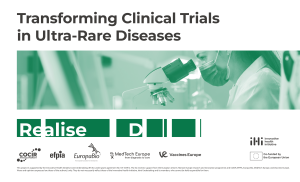By Saskia Pelzer, Project Manager at Teamit
When Marie Curie won the Nobel Price for physics together with her husband for the discovery of radiography in 1903, she was the first female scientist in a line of male-only winners.
Curie devoted her life to science and became the first woman to teach at the Sorbonne University. She won her second Nobel prize for Chemistry, for the isolation of pure radium in 1911. Her work was remarkable and prepared future generations of scientists to advance. At the same time, she set a milestone that changed how universities and academia should see the involvement of women in science.
Yet today only 29.3% of those employed in scientific research and development worldwide are female according to the UNESCO science report. In Central and Eastern Europe those numbers are a slightly higher at 39.3% but yet showing room for improvement. The higher-income countries, such as Germany, Finland, the Netherlands and France, known to be top-notch in several research fields, still fight with gender disparity with each only around 25% to 28% women working in science. In comparison, Southeast Europe is almost at parity with 49% and even Spain shows a percentage of 40.1% of women working in science.
 When looking at bachelor and master’s degrees, women in research outnumber men in academia, but the leaky pipeline hits at PhD and post-doc level where the number of female researchers suddenly drop. Only 28% of working researchers post doctorate are women.
When looking at bachelor and master’s degrees, women in research outnumber men in academia, but the leaky pipeline hits at PhD and post-doc level where the number of female researchers suddenly drop. Only 28% of working researchers post doctorate are women.
The numbers are even more controversial when it comes to black and women of colour or women with disabilities working in science, as there is a lack of collective global data. The Nacional Science Foundation in the United States reported that only 7.7% of the fulltime working scientists and engineers are Black or African American. One can only speculate the numbers at global level and the need for more accurate data is evident.
“There are many forms of female nonexistence,” wrote Rebecca Solnit in her famous essay Men explain things to me. History does not leave room for women’s achievements; we only know about those statistical outliers in a line that appears an ever-stable route of male successors. We may know Marie Curie, we may have heard from Ada Lovelace, you may recognize the work of Bertha von Suttner, but all the other female contributors to the society we live in today have vanished leaving blank papers.
Multiple factors determine why the leaky pipeline continues to be an issue in science. Some studies show that women regress from science due to family obligation or due to the lack of sufficient funding and stability and increasing pressure with impossible standards in a field that is already highly competitive.
Eva Molero, CEO of TEAMIT, who has been working with researchers from all over the world for years, says, “There has been an evolution, definitely. When I started my career, all the Principal Investigators were men and women were more represented in junior or administrative positions. Today we have much more female leads in research projects, especially looking at our own projects H2O, EU-PEARL and VAC4EU.”
 But she also mentions that women in higher positions had to make sacrifices, “There is certainly more reconciliation in work for female leads, especially compromising on family life. The academic world beholds not only great opportunity but also a lot of instability, competition and precarious payment. There is this point in life where many women slow down due to family or just by own choice, but it can hold them years back. I have also seen many switching to the business side as there are better benefits and in general more protection for employees.”
But she also mentions that women in higher positions had to make sacrifices, “There is certainly more reconciliation in work for female leads, especially compromising on family life. The academic world beholds not only great opportunity but also a lot of instability, competition and precarious payment. There is this point in life where many women slow down due to family or just by own choice, but it can hold them years back. I have also seen many switching to the business side as there are better benefits and in general more protection for employees.”
Elisa Ferrer, holding a PhD in Physiology and a post-doc research in neurophysiology, also works at TEAMIT and seconds this observation, “As a post-doc I could observe that female post-doc researchers that wanted to have children had a tremendous amount of pressure to keep delivering results ‘as if nothing happened.’ They were forced to come back to work earlier than expected if they wanted to keep publishing and having the same opportunities for career development as their male peers.”
The different European member states try to tackle the leaky pipeline year by year. There are awareness campaigns such as the #nomorematildas campaign in Spain showing the invisibility of female scientists in history. There are campaigns inspiring young girls for a career in STEM (Science, technology, engineering, and mathematics) in Germany. We are celebrating today only the 6th international day of girls and women in science. But awareness campaigns only cannot change the leaky pipeline at the top.
 The first commissioner for equality Helena Dalli said in her speech on women in science last year, “Europe needs to foster women’s talents in science, challenge male dominance of the sector, and provide an enabling environment. This is important for women, for our society and for the economy.”
The first commissioner for equality Helena Dalli said in her speech on women in science last year, “Europe needs to foster women’s talents in science, challenge male dominance of the sector, and provide an enabling environment. This is important for women, for our society and for the economy.”
The 20th century slowly changed and broke patterns in the western world but it is up to the 21st century to truly showcase women’s work and diversity in research globally for in an everlasting future of generations to profit from.




